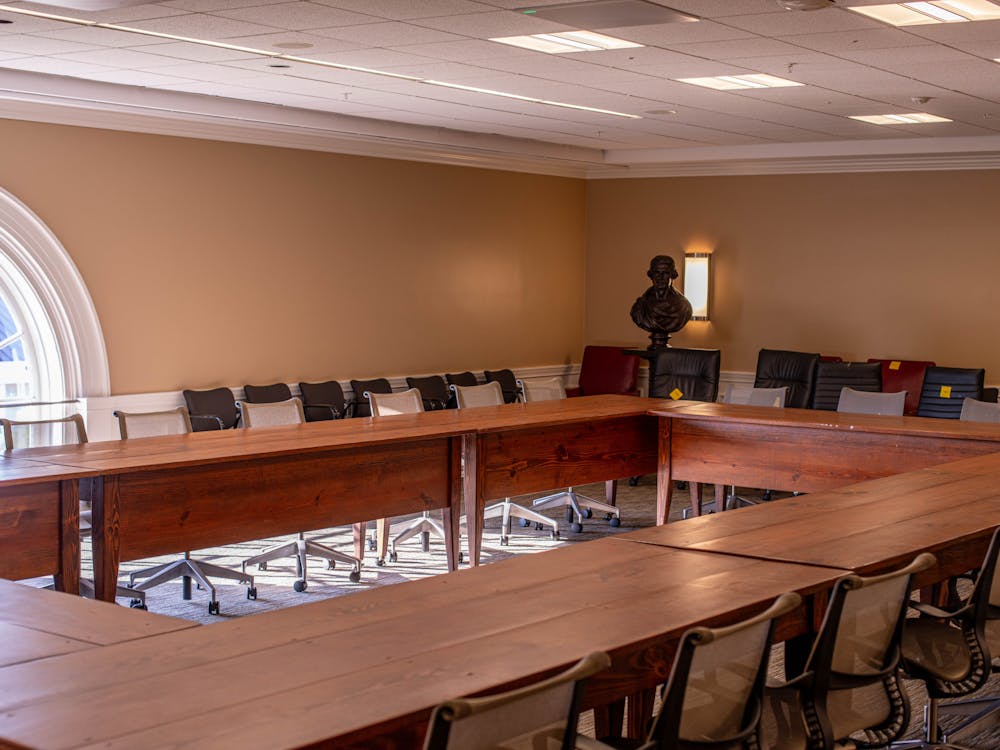A virtual reality simulation with broad implications for future environmental research at the University, the “U.Va. Bay Game,” debuted yesterday before a group of students and faculty in the Harrison Institute Auditorium.
The Bay Game simulates the Chesapeake Bay ecosystem and allows for participants to make decisions as virtual farmers, fishermen, citizens or policymakers, Vice President for Research Tom Skalak said. Players of the University-developed computer game can monitor how their choices affect the ecosystem, as the software tabulates actions and determines how they affect critical environmental and economic indicators like dissolved oxygen and profits of farmers and fishermen, Skalak said.
Skalak initiated the effort to create the game, recruiting Systems Engineering Prof. Gerry Learmonth to head the game’s technical development. Learmonth and his team of five graduate students worked with professors and students from the College, as well as the Architecture, Commerce, Engineering, Law, Medical and Nursing Schools. These contributors will continue to play an active role in the game’s later use and evolution, Learmonth added.
Learmonth described the bay’s health as “the response to the collection of millions of people making personal decisions.” The creation of the game was therefore quite complex, involving a network of variables that needed to interlock into a complete picture.
Skalak emphasized that no other research institution has developed a tool of this breadth and scale. The project’s potential lies not only in the possibility of it being applied to other estuaries and environments around the world, but also to financial markets, where a web of interacting investors often mimics an actual ecosystem.
Learmonth said his team used a framework and software that a private consultant, who had done this modeling on the Everglades, already developed. The team then worked to integrate this model with the Chesapeake Bay, coordinating the thousands of economic and environmental factors that impact the system.
Jeffrey Plank, associate vice president for research, said the game is a “distinctive laboratory for testing policy.” Plank, who also helped coordinate the interdisciplinary effort to create the game, said he hopes it will one day benefit policymakers, allowing them to test environmental policies before they are put in place.
Michael Purvis, a systems engineering graduate student and member of Learmonth’s team, said the project’s appeal lies mainly in its future applications.
“This is something that is owed significant effort because of its potential contribution to environmental science and the fact that it could serve as a model in regions around the world,” Purvis said.
The software, though functional, is still in its initial stages of development, Skalak said. Students, both graduate and undergraduate, will work with faculty to continue to add additional layers of detail and accuracy, improving the game’s practicality and usefulness, Skalak said.
The game will be available online to classes next semester, Learmonth said.
“We hope that there will be a next version that may involve thousands of U.Va students, providing more reality and visibility that will drive public policy,” Skalak added.






